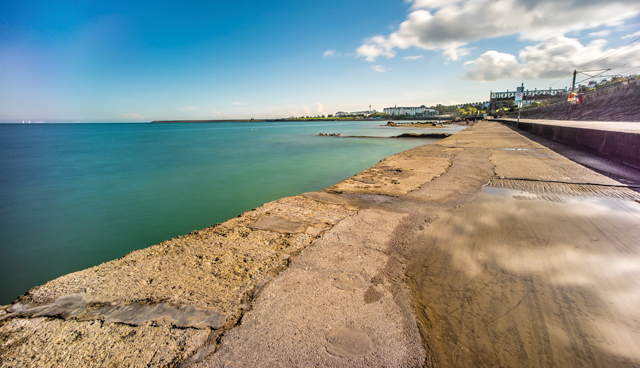Storms cause rise in seaside bacterial levels

Swimming bans and advisory notices have been put in place across many popular beaches throughout Ireland after poor water quality was reported following heavy rain in August.
With the Covid-19 pandemic and the gradual lifting of movement restrictions prompting a ‘staycation’ trend in Ireland, beaches around the country have been in heavy use throughout the summer and into August. However, many beaches and swimming points across counties Dublin, Wexford, Waterford, Kerry and Galway were among those affected after the heavy rainfall of Storm Eileen prompted water quality concerns.
Swimming was banned at four beaches in Wexford: the blue-flag holding Ballymoney North beach, green coast beach Booley Bay, Morris Castle near Kilmuckridge and Duncannon. The bans were put in place after routine testing by Wexford County Council’s bathing water sampling programme uncovered E. coli and Intestinal Enterococci breaching mandatory levels of the bathing water at all four beaches.
Technical staff from the Council investigated the matter, with the initial expectation that the rainfall was at least partly to blame for the high levels of bacteria in the water. The bans were lifted the following week after further testing by the Council found the water to be back to its “usual excellent standard”.
Similar occurred at Seapoint Beach in Dublin, with Dún Laoghaire-Rathdown County Council first putting a temporary bathing advisory warning in place and then replacing that with a prohibition warning as a result of “an increase in the levels of bacteria found in the bathing water as a result of overflows from the Irish Water wastewater network”. The prohibition notice was lifted the following week after the bathing water quality had “returned to ‘good/excellent’ status”.
Waterford County Council was also forced into issuing prohibition and advisory notices for several of its beaches; Dunmore Councillors Strand, Dunmore Lawlor’s Strand, Tramore Beach and Pier, Boatstrand, Ardmore, Newtown Cove and Baile na nGall were all hit with prohibition notices, while advisory notices were put in place at Bunmahon and Stradbally. The majority of these were lifted within the week, with restrictions at Sradbally, Tramore and Baile na nGall remaining.
West of Waterford, Kerry County Council was forced to bring in swimming bans at Fenit beach and diving board area, Inny beach in Waterville and Waterville town beach due to water samples showing high levels of E. coli at the county’s beaches. The restrictions at Fenit were lifted later within the same week.
In Galway, a bathing prohibition notice and prior warning notice were issued for Ballyloughane and Grattan beaches respectively due to “the possibility of an increase in the levels of bacteria in the bathing water over the coming days due to forecasted increased rainfall and possible activation of storm overflow”.
For Ireland’s seaside communities and tourism economy, the hope will be that the autumn’s inevitable increase of rain does not come in such heavy downpours, leaving strands and water quality unaffected and things returning to their new normal as soon as possible.





